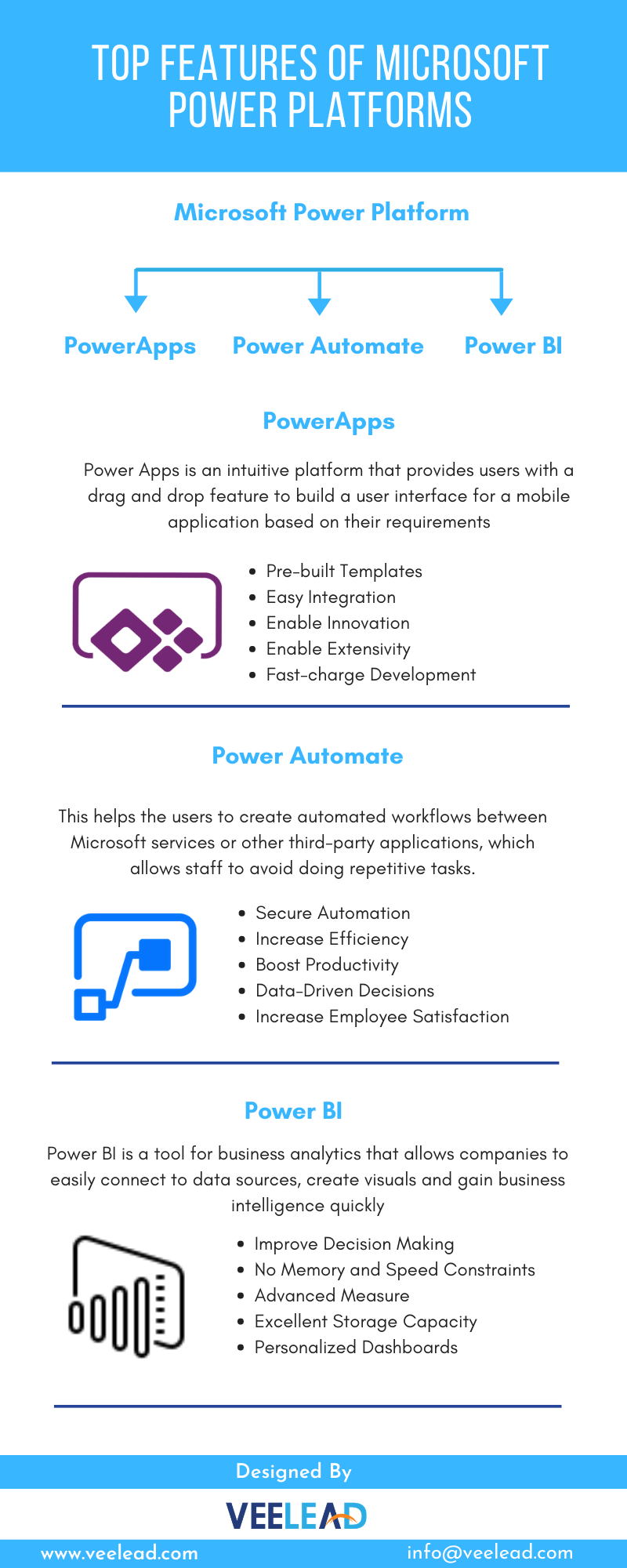What Is Microsoft Power Platform and How It Can Be Used for Business?
Microsoft Power Platform
The ‘Power Platform’ is a collective term that includes three Microsoft products: Power BI, PowerApps and Power Automate (earlier known as Flow). This helps people easily manipulate, surface, automate and analyze data and can be used with Office 365, Dynamics 365 and also other third-party apps and other Microsoft services. The Power Platform is possible thanks to the Common Data Service which is essentially the underlying data platform that provides a unified and simplified data schema to inter-operate applications and services.
At present, companies are extremely reliant on data and the amount of data that they are creating is continually increasing. While all this data is inevitable, it is useless unless companies gain insights and meaning from it.
Earlier, data analysis, app creation and automation would be done by IT or Development teams. This requires staff to outline their requirements and objectives, submit these requests to their IT department and then see whether it was approved and subsequently, wait for it to be built. This would be time-consuming and would use valuable resources internally and highly costly.
This is why the Power Platform becomes more important. The Power Platform creates the ability for digital information to be accessible to the non-technical end-user. Power Platform provides three technologies that allow staff to do more with their data themselves without any coding knowledge. It provides a simple method for most users to be able to create, automate or analyze their data in ways that have never been possible for the average worker.
PowerApps:
Power Apps is an intuitive platform that provides users with a drag and drop feature to build a user interface for a mobile application based on their requirements. This allows the user to add various user interfaces like textboxes, choice fields, etc. It can also provide the opportunity for users to use media devices like the camera, videos, etc. and other features necessary to build a modern mobile application. Also, have an added feature to connect to various data sources using Power Apps and after the development is completed, the users just need to publish the app to be consumed in the organization.
Power Automate:
Power Automate is earlier known as Microsoft Flow. This helps the users to create automated workflows between Microsoft services or other third-party applications, which allows staff to avoid doing repetitive tasks and save valuable time. Power Automate already comes in with numerous pre-defined templates to choose a workflow and start working with. Users can pick up any of these workflow templates or can also start building their own workflow from scratch.
Power BI:
Power BI is a tool for business analytics that allows companies to easily connect to data sources, create visuals and gain business intelligence quickly. Power BI also has REST APIs which helps the developers to automate few administrative tasks, such as refreshing a dataset or adding a new user to a report, etc
Features of Power Platform
The Power Platform connects to a wide range of data sources including third-party apps. But it is extremely powerful when working with Office 365 and Dynamics 365. Microsoft pitched the Power Platform as a way to “unlock the potential of Dynamics 365 and Office 365 faster than you ever thought possible” so companies can easily extend, customize and integrate these services as required. If you would like to find out more about the Power Platform service or discuss a potential idea, reach us at Veelead Solutions.

Comments
Post a Comment